Some of us are old enough to remember going to record stores and looking through the racks of LPs. Occasionally we would even be able to afford to buy one of these precious vinyl discs.
The age of vinyl and Hi-Fi hardware
In the days of vinyl, audiophiles would spend their money on Hi-Fi equipment that could reproduce the music exactly – looking to match the sound that was first heard in the recording studio when the track was originally created. This first wave of Hi-Fi enthusiasts focused on the speakers – purchasing the same type of professional reference monitors that the studio engineers used.
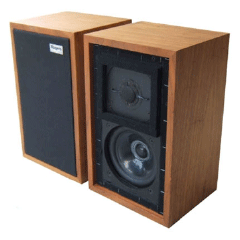
Soon however people realized that there was a lot more information that could be extracted from the tiny indentations on their vinyl discs. Turntables, tone-arms and stylus became the focus of peoples attention and the age-old computer mantra of "Garbage in – Garbage out" was adopted by all who were interested in hearing the music with all its original detail.
The arrival of digital audio CDs
Then audio CDs came along. For some they marked a backward step compared to the leading vinyl systems. There appeared to be less detail. Musical ambience was lost and the words "less musical" were often used to describe the early CD players. Some experts put this down to the loss of dynamic range. The16bit data used for CDs provided a theoretical 96db of dynamic range, which should be enough, but perhaps other issues were at play.
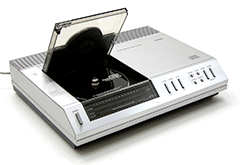
Others said it was the sampling resolution. At 44kHz this should allow reproduction of the whole 20Hz to 20kHz, human auditory range. But experts pointed to the sharp high-frequency cut-off filters required to avoid anti-aliasing effects and highlighted the potential loss of harmonics and other subtle effects. CD players did improve over time. Noise isolation, better timing control and improved digital to analog conversion techniques all helped to recover some of the lost information and improved the musical experience. However Hi-Fi enthusiasts hung on to their vinyl records and continued to claim that their analog systems still had an edge.
MP3 - the dark ages
For audiophiles the dark ages came with the arrival of portable music players. Storing music on a flash device in a portable music player, and later on a mobile phone, made access to music so much more convenient. You could carry your whole music collection with you and download new music whenever you wanted.
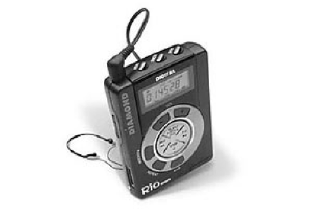
But there was a problem with the music quality. With slow Internet connections and expensive flash memory storage, digital music files had to be compressed. The result was the MP3 file. All the effort and expertise of the sound engineer to capture the music, the ambience and the musicality, was squished out as the music was compressed down into small digital files. One compression technique was to look for zeros or data close to zero and remove this information, to be replaced later by synthesized zeros during playback. We still got the loud heavy beats but lots of the subtle information that hovers around zero in music, was lost. The initial musical attack that you hear when a guitar string is plucked, or the breath you hear when a brass instrument is played, were compressed away and replaced by a synthesized, averaged-set of digital numbers.
The arrival of music services
The concept of buying and carrying all your music on a portable device is starting to fade. Now people stream their music from online services, giving them access to, much more choice. They can take advantage of online big-data analysis tools that help them find new artists and new music that they would never have discovered otherwise. Some services will let you find all the music created by your favorite music producer. You can go even further and find music that has been mastered by a particular sound engineer or music that has been created at a particular concert hall or studio.
No one wants to lose the convenience of digital music. The record store was great but times have moved on and getting your music over the Internet is so much easier and more convenient. But do we have to put up with squished, compressed music files?
Hi-Res headphone sales boom
Not any more. Internet connection speeds are now fast, flash memory is cheap, and in the Cloud I can have as much storage as I need. We're starting to see a backlash against the compressed music files and a growing demand for Hi-Res digital music that delivers the original quality of the music and recording.
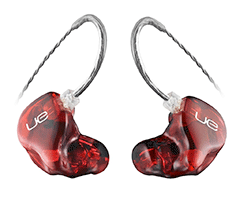
Sales of expensive headphones have been booming and people can now hear the inadequacies of the compressed music in their MP3 files and the poor quality of most smartphone audio outputs. Just as before when people first bought studio monitor quality speakers, people with studio quality in-ear monitors can now hear that there is information missing as they listen to their digital music. There is much more musical information available and they want to make sure that they can get every last detail. The old mantra of "Garbage-in – Garbage-out" has returned. We now want high quality musical sources to go with our expensive headphones.
We don't need to limit ourselves to lossless–CD quality either. We can have higher dynamic range and more accurate sampling that extracts much more detail from the music, getting us back to the musicality of a great vinyl system or the experience of a live performance.
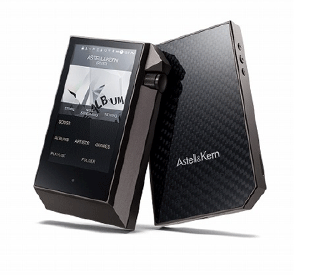
Most digital music today is recorded at 24bits and the DSP algorithms in most leading pro-studio equipment will store intermediate DSP-math calculations at 64bits to ensure that no detail is lost (something our xCORE devices do too). Digital music is now sampled at 96kHz, 192kHz or even 384kHz. Up sampling can help to restore even more resolution. Working at these sampling rates and these bit resolutions reduces distortions but most importantly it allows more detail to be extracted at the low sound levels which are so important to the auditory experience. Hi-Res music sources are starting up fast. Download services and streaming services are now available in most countries – with Japan and China leading the charge.
Real Hi-Res digital music systems on-the-go
Wired or wireless - that is the next question? Well let's have both. I can use my smartphone to access the Internet to find music and discover many more new artists and tracks. I can use the best online services that make discovering music easy and fun. As new services and new online user interfaces are developed, I can switch to use these. I can do all this over a wireless connection. My smartphone is my remote control.
I can then download my music files and store them on my device or I can stream them over the Internet as part of a Hi-Res music streaming service. I can even stream the Hi-Res music file to my music player over a wireless connection.
However for playback let's make sure we store the file ,or buffer it, so that we don't lose any detail. Then connect over a wire to a specialized Hi-Res audio playback device, so that we don't lose any musical data. Let's make sure that the digital components in our device shield the analog music playback from the digital noise that we find in our multimedia server, PC, or on our smartphone. And make sure that it can support the latest digital Hi-Res music formats like DSD and new Hi-Res lossless formats like MQA.
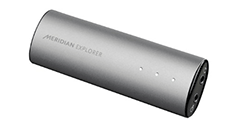
In the past our audiophile LP turntables were great at extracting every last detail from a vinyl LP and our professional studio monitors let us experience the full musical performance. Now we must make sure that our digital devices extract all the information that is contained in our new Hi-Res music files. We need to ensure that the digital components don't add any noise or timing anomalies. We need to select the components carefully. We can't just focus on the DAC or the Op-Amps, we need to make sure that we have great digital audio components too, including the connectivity over USB and specialized Time-Sensitive connections for audio over Ethernet. Let's make sure we don't put ‘Garbage' back into our new Hi-Res digital music system.
Enjoy your music – the way it was supposed to be heard.
What do you think about the future of digital audio? Please use the Comment button below to add your thoughts.



































































